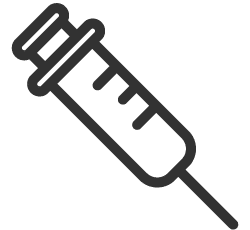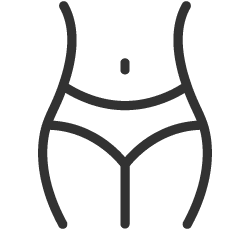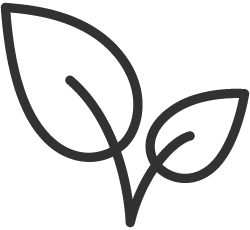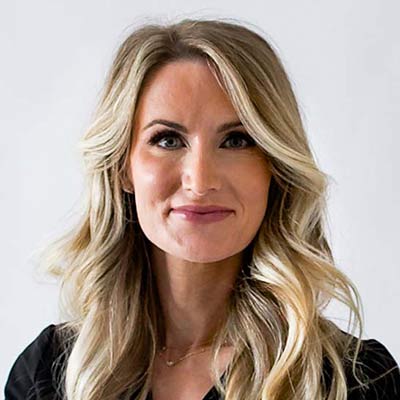Nasolabial folds, the lines that form between the nose and the corners of the mouth, often become one of the first visible signs of aging. As time passes, you might notice these lines deepening, especially when you smile or laugh, which is why they’re often called smile lines or laugh lines. While they’re completely natural, it’s no surprise that many of us want to keep them under control. Fortunately, modern skincare techniques and treatments offer effective ways to prevent and reduce the appearance of these lines without taking away from the expressions that make you, you.
In this guide, we’ll explore how nasolabial folds form, the factors that contribute to their development, and the range of treatments available to smooth them. Whether you’re just starting to notice subtle creases or you’re looking for solutions to deeper lines, there are plenty of options to help you maintain a youthful and refreshed look at any age.
What Are Nasolabial Folds?
Nasolabial folds are the natural creases that run from the sides of the nose down to the corners of the mouth. These lines are more commonly known as smile lines or laugh lines because they become more pronounced when you smile or laugh. In the skincare world, however, these lines are referred to more technically as nasolabial folds, derived from the Latin words for “nose” (naso) and “lips” (labial).
Though these lines are entirely normal and present in nearly everyone, their depth can vary based on several factors, including genetics, age, and lifestyle. Some individuals may have faint folds that only appear when they express certain emotions, while others may develop more pronounced lines over time.
It’s essential to understand that nasolabial folds aren’t considered wrinkles but rather structural features of the face. As we age, these folds tend to become more defined due to factors like collagen loss, reduced skin elasticity, and volume loss in the midface. This can make them appear deeper and more prominent, leading many to seek treatment options to minimize their appearance.
How Nasolabial Folds Form Over Time
Nasolabial folds often start out as subtle lines, but over time, they can become more pronounced due to several natural aging processes. One of the main contributors is the skin’s gradual loss of collagen and elastin—two proteins that give your skin structure and flexibility. In your younger years, your skin can bounce back after every smile, laugh, or expression. However, as you age, the skin loses its ability to maintain that smoothness, and the folds start to deepen.
Facial expressions also play a significant role. With every smile or laugh, the muscles beneath your skin contract, creating temporary creases. Over time, these creases become more permanent, resulting in the familiar appearance of nasolabial folds. While it’s natural to express emotions through your face, repeated muscle movements contribute to the formation of deeper lines as the skin weakens.
Other factors accelerate the formation of nasolabial folds. Sun exposure, for example, breaks down collagen in the skin, speeding up the aging process. Smoking also weakens skin’s elasticity, while poor hydration can make the skin more vulnerable to lines and wrinkles. The combination of facial movements, environmental factors, and the natural aging process all contribute to the deepening of these lines over the years.
Preventative Measures to Slow Down Smile Lines
While nasolabial folds are a natural part of aging, there are several ways to slow their development and keep your skin looking smoother for longer. Prevention is often the first line of defense, and small changes in your daily routine can make a significant difference over time.
Protect Your Skin from the Sun
UV rays are notorious for breaking down collagen and elastin, which are crucial for keeping your skin firm and youthful. Wearing sunscreen with at least SPF 30, even on cloudy days, can help prevent sun damage and delay the onset of deeper smile lines. Additionally, incorporating hats and sunglasses into your routine can give your skin extra protection against harmful UV rays.
Stay Hydrated
Hydration is key to maintaining skin elasticity. Drinking plenty of water and using a high-quality moisturizer can keep your skin hydrated and supple. Dehydrated skin is more prone to forming lines and wrinkles, so a good skincare regimen that includes hydrating products, like those containing hyaluronic acid, can help keep your skin plump and smooth.
Use Skincare Ingredients that Promote Collagen
Skincare ingredients like retinoids and antioxidants play a crucial role in prevention. Retinoids, derived from vitamin A, can stimulate collagen production and reduce the appearance of fine lines over time. Antioxidants, such as vitamin C, help to protect your skin from environmental stressors and free radical damage, both of which contribute to aging. Adding these ingredients into your nightly routine can support long-term skin health.
Try Facial Exercises or Massage
Consider incorporating facial exercises or massage into your routine. These techniques can improve blood circulation and help maintain muscle tone in your face, which may reduce the chances of developing deep nasolabial folds. Regular facial massage with a gentle upward motion can also help stimulate collagen production and improve skin elasticity, making your smile lines less noticeable.
Treatment Options for Nasolabial Folds
If you’re noticing deeper nasolabial folds and want to reduce their appearance, several effective treatments can help smooth these lines. From non-invasive procedures to more involved solutions, there’s a wide range of options depending on the severity of your smile lines and your personal preferences.
Dermal Fillers
Dermal fillers are one of the most popular non-surgical options for treating nasolabial folds. Fillers like Juvederm and Radiesse are injected into the skin to restore lost volume and smooth out deep lines. These fillers contain substances like hyaluronic acid, which is naturally found in the body and helps to plump the skin. The procedure is quick, with minimal downtime, and results can last anywhere from 6 months to 2 years, depending on the type of filler used.
Fillers are particularly effective because they not only smooth out lines but also add youthful volume to the face, which can enhance overall facial contour.
Laser Treatments
At Arsenault Aesthetics, we offer several advanced laser treatments that can help reduce nasolabial folds by stimulating collagen production and tightening the skin. One option is the Moxi laser, a gentle laser that rejuvenates the skin by targeting uneven skin tone and texture while encouraging collagen regeneration. This makes it a great choice for early signs of aging and mild to moderate lines.
For more intensive treatment, the CO2RE laser is highly effective for deeper wrinkles and lines. It works by resurfacing the skin and triggering deep collagen production, resulting in firmer, smoother skin over time. The downtime is slightly longer, but the results can be more dramatic, making it ideal for those with more pronounced nasolabial folds.
Microneedling
Microneedling, often combined with Platelet-Rich Fibrin (PRF), involves using tiny needles to create micro-injuries in the skin. This stimulates your body’s natural healing process, encouraging collagen and elastin production. Microneedling is especially helpful for those looking to improve skin texture and firmness without adding volume, making it a good choice for individuals with mild to moderate nasolabial folds.
When microneedling is combined with PRF, which uses your body’s own growth factors to boost skin rejuvenation, the results can be even more pronounced.
PDO Thread Lifts
PDO Thread Lifts are another excellent non-surgical option for addressing nasolabial folds. During this procedure, dissolvable threads are inserted under the skin to lift and tighten sagging areas, including around the nasolabial folds. As the threads gradually dissolve, they stimulate collagen production, offering both an immediate lift and long-term skin rejuvenation. PDO Thread Lifts provide a subtle, natural-looking improvement without the need for invasive surgery, and the results can last up to a year or more.
Surgical Options
For those with deeper, more pronounced nasolabial folds, surgical options like a facelift or a mini-lift might be the best solution. A facelift tightens the skin and underlying muscles, providing a more permanent solution to severe folds. This option is generally recommended for older individuals or those whose skin has significantly lost elasticity.
While surgery offers long-lasting results, it involves more downtime and recovery than non-surgical treatments. It’s often a consideration for those looking for a more dramatic and comprehensive facial rejuvenation.
The Age Factor: Tailored Treatments for Every Decade
Nasolabial folds deepen over time as the skin loses collagen and volume, but the treatments that work best often depend on the stage of life you’re in. Understanding how smile lines evolve and what interventions are most effective at each age can help you maintain a youthful, refreshed appearance.
30s: Prevention and Early Intervention
In your 30s, the signs of nasolabial folds may be subtle but noticeable, especially when smiling or laughing. At this stage, prevention is key. Implementing skincare products rich in antioxidants and retinoids can help preserve collagen and maintain skin elasticity. For those seeking early intervention, light treatments such as the Moxi laser or microneedling can be highly effective for stimulating collagen production and keeping the skin smooth. A small amount of dermal filler may also be used if volume loss is present.
40s: Addressing Volume Loss and Skin Elasticity
By your 40s, collagen production slows significantly, and nasolabial folds often become more pronounced due to the loss of facial volume. At this stage, dermal fillers become an ideal solution for replenishing lost volume and smoothing deeper lines. Combining fillers with treatments like the CO2RE laser can also help to stimulate collagen and tighten the skin, making the folds less visible.
Another excellent option in your 40s is the PDO Thread Lift, which provides an instant lift to sagging areas around the nasolabial folds while promoting long-term collagen production.
50s and Beyond: Deep Fold Treatment
In your 50s and beyond, nasolabial folds may deepen further as the skin becomes thinner and more elastic tissue is lost. More comprehensive treatments, such as stronger dermal fillers or a combination of PDO Thread Lifts and laser treatments, may be recommended. These treatments can work together to restore volume, smooth lines, and improve overall skin texture.
For those seeking more permanent results, surgical options like a mini-lift or facelift may be considered. These procedures offer a more dramatic improvement for those with significant volume loss and sagging skin.
Skin Types and Nasolabial Folds
When it comes to nasolabial folds, your skin type plays a crucial role in how these lines form and how they should be treated. Different skin types—whether oily, dry, or sensitive—respond differently to aging, and understanding your skin type can help tailor the most effective treatments.
Dry Skin
Dry skin tends to develop lines and wrinkles earlier due to a lack of natural oils that help keep the skin hydrated and supple. If you have dry skin, your nasolabial folds may appear more pronounced at a younger age. In addition to using moisturizers that contain hyaluronic acid to lock in hydration, treatments like dermal fillers or PDO Thread Lifts can help plump the skin and restore lost volume, minimizing the appearance of folds. It’s also important to incorporate hydrating serums and a rich moisturizer to support ongoing treatment results.
Oily Skin
Oily skin typically produces more natural sebum, which can help delay the appearance of fine lines and wrinkles. However, over time, nasolabial folds can still develop as facial volume diminishes. The benefit for individuals with oily skin is that treatments like dermal fillers and laser therapies tend to work well without the risk of excessive dryness. Skincare products that balance oil production while promoting collagen production—like retinoids and vitamin C—can also help keep nasolabial folds at bay.
Sensitive Skin
For those with sensitive skin, treating nasolabial folds requires a gentle approach to avoid irritation. Laser treatments, such as the Moxi laser, are often a good choice for sensitive skin types because they offer gentle yet effective collagen stimulation without causing inflammation. Microneedling with PRF is another option that works well for sensitive skin, as the body’s natural healing factors are used to rejuvenate the skin. It’s crucial to consult with a skincare professional to select treatments that cater to your skin’s unique sensitivities while addressing nasolabial folds effectively.
Common Myths About Smile Lines
When it comes to nasolabial folds, or smile lines, there are plenty of myths and misconceptions that can cause confusion. Let’s clear up some of the most common myths so you can understand the real factors behind these lines and the best ways to manage them.
Myth 1: Only Surgery Can Treat Nasolabial Folds
Many people believe that once nasolabial folds appear, surgery is the only way to eliminate them. While surgical options like facelifts can offer dramatic and long-lasting results, they’re not the only effective treatments. Non-invasive treatments, such as dermal fillers, PDO Thread Lifts, and laser therapies, can significantly reduce the appearance of these lines without the need for surgery. These options offer excellent results with minimal downtime, making them a popular choice for those seeking a more natural, less invasive approach.
Myth 2: You Should Avoid Smiling to Prevent Smile Lines
Some people think that if they avoid smiling or other facial expressions, they can prevent smile lines from forming. While it’s true that facial movements can contribute to the development of nasolabial folds, avoiding smiling is neither practical nor necessary. Smile lines form due to a combination of factors, including collagen loss, volume depletion, and skin aging. Rather than suppressing your expressions, focus on skincare and treatments that promote collagen production and maintain skin elasticity, such as fillers or laser treatments.
Myth 3: Nasolabial Folds Are a Sign of Poor Skincare
Nasolabial folds aren’t an indication of poor skincare—they are a natural part of aging that everyone will experience to some degree. While a good skincare routine can help slow down the formation of these lines, factors like genetics, sun exposure, and the natural aging process play a much larger role. Using high-quality products that promote collagen and protect your skin from environmental damage can help reduce the severity of smile lines, but even those with excellent skincare habits may still develop these folds over time.
Myth 4: Dermal Fillers Will Make You Look Overdone
There’s a common fear that dermal fillers will create an unnatural or “overfilled” appearance, but this is far from the truth when administered by skilled professionals. When done correctly, dermal fillers provide a subtle enhancement that restores lost volume and smooths out nasolabial folds while preserving your natural facial expressions. The key is working with an experienced practitioner who understands facial anatomy and can achieve balanced, natural-looking results.
Frequently Asked Questions About Nasolabial Folds
Here are some commonly asked questions to help you better understand nasolabial folds and the treatments available for reducing their appearance.
What are nasolabial folds?
Nasolabial folds, also known as smile lines or laugh lines, are the natural creases that run from the sides of the nose down to the corners of the mouth. These lines can become more pronounced over time due to aging, collagen loss, and repeated facial expressions.
Are nasolabial lines and smile lines the same thing?
Yes, smile lines and nasolabial lines refer to the same set of lines, but the terms are used slightly differently in casual and clinical settings. Smile lines is a more informal term that describes the lines or creases that become more noticeable when you smile. This term is often used conversationally to describe the lines that appear between the nose and the corners of the mouth during expressions. Nasolabial lines (or nasolabial folds) is the more clinical term. It refers to the same lines but is used specifically to describe the natural crease that runs from the sides of the nose to the corners of the mouth, which can deepen with age due to factors like loss of skin elasticity, volume, and repeated facial movements.
Are nasolabial lines and laugh lines the same thing?
Yes, laugh lines refer to the same thing as smile lines and nasolabial folds. Like smile lines, laugh lines are an informal term used to describe the creases or folds that run from the sides of the nose to the corners of the mouth. These lines are often more visible when laughing or smiling, which is how the term originated. So, while nasolabial folds is the clinical term, laugh lines and smile lines are casual, everyday ways to describe the same lines on the face.
What causes nasolabial folds to deepen over time?
As we age, the skin loses collagen and elastin, proteins that keep the skin firm and elastic. Combined with repetitive facial movements and environmental factors like sun exposure, this loss leads to the deepening of nasolabial folds.
Can I prevent nasolabial folds from forming?
While you cannot completely prevent nasolabial folds, you can slow their development by protecting your skin from the sun, staying hydrated, using skincare products that promote collagen, and avoiding smoking. Facial exercises and massages can also help maintain skin elasticity.
What treatments are available to reduce nasolabial folds?
There are various non-surgical treatments available, including dermal fillers, laser treatments, microneedling, and PDO thread lifts. These treatments can help restore volume, smooth out lines, and stimulate collagen production, reducing the appearance of nasolabial folds.
How do dermal fillers help with nasolabial folds?
Dermal fillers, such as Juvederm and Radiesse, are injected into the folds to restore lost volume and smooth out deep lines. These fillers contain hyaluronic acid, a substance naturally found in the body, which helps plump the skin and provides immediate results that last several months.
Are laser treatments effective for nasolabial folds?
Yes, laser treatments like the Moxi laser and CO2RE laser are effective in reducing the appearance of nasolabial folds. These treatments work by stimulating collagen production and tightening the skin, making the folds less visible over time.
What is the downtime for nasolabial fold treatments?
Most non-surgical treatments, such as fillers and lasers, have minimal downtime. You may experience mild swelling or redness, but these side effects usually subside within a few days. More intensive treatments, like CO2RE laser, may require a slightly longer recovery period.
Are nasolabial fold treatments suitable for all skin types?
Yes, treatments for nasolabial folds can be customized to suit different skin types. For example, dermal fillers work well for both dry and oily skin, while laser treatments like the Moxi laser are gentle enough for sensitive skin. It’s important to consult with a professional to determine the best treatment for your skin type.
At what age should I consider nasolabial fold treatments?
Preventative measures can begin in your 30s with skincare products and light treatments. More intensive treatments, such as fillers or thread lifts, are typically recommended in your 40s and beyond as the folds become more pronounced.
How long do the results of nasolabial fold treatments last?
The longevity of results depends on the treatment. Dermal fillers can last 6 months to 2 years, while laser treatments and thread lifts can provide longer-lasting effects by stimulating collagen production over time. Regular maintenance treatments can help prolong the results.
Conclusion
Nasolabial folds, or smile lines, are a natural part of aging, but that doesn’t mean you have to live with them. With modern skincare treatments ranging from dermal fillers to lasers and PDO Thread Lifts, there are many effective ways to smooth out these lines and restore a youthful, refreshed appearance. Whether you’re looking to prevent smile lines early on or address deeper folds, there’s a treatment option suited to every age and skin type.
At Arsenault Aesthetics, we specialize in personalized solutions tailored to your unique needs. Our expert team is here to guide you through the best treatment options to help you achieve the smooth, radiant skin you deserve. Residents of Lakewood Ranch, Bradenton, Sarasota, and the surrounding areas are welcome to book an appointment with us to explore the best approach for minimizing nasolabial folds and other signs of aging.
Don’t wait to feel your best—schedule an appointment today and discover how our innovative treatments can help you maintain a youthful, vibrant look for years to come.




















